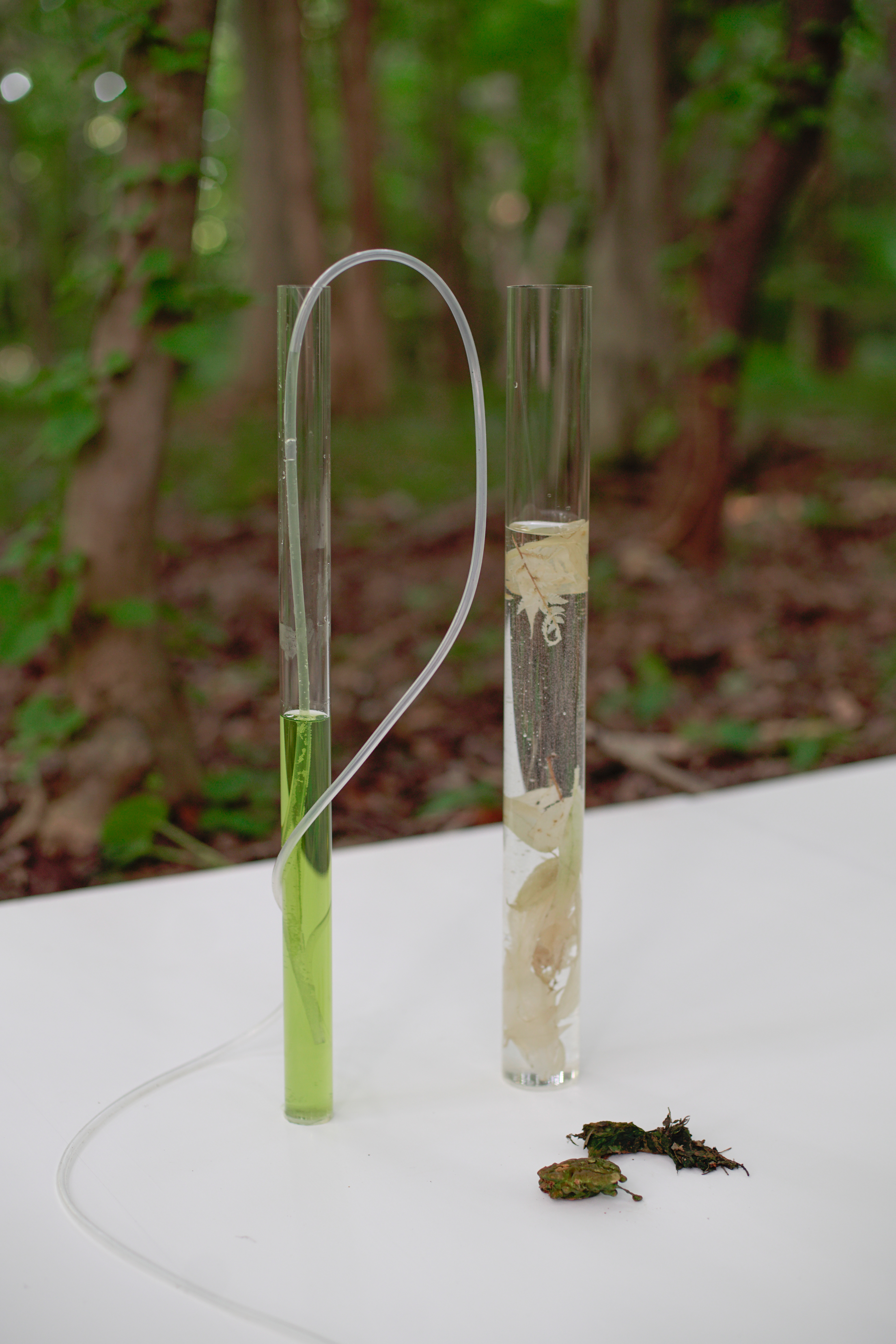During the residency of ZAO EXPO, 50 species of plants were collected in the surroundings of the Zao volcano (Miyagi, Japan). Their substances were extracted using the artist’s technique, which is based on pre-colonial methodologies from South America, used to prepare medicines from plants. Inside open glass tubes in the middle of the forest, the medicinal substances extracted evaporate and return to the atmosphere. The site-specific invites the public to enter the forest and pay attention to the interspecies relationships there.
In a coexisting system with a peristaltic pump, the plant's substances circulate back to the soil, referring to the interdependent cycles of water, minerals, and plants in the volcanic region of Zao. Stones and plants collected from the Matsu and Nigori rivers (originated in the Zao volcano) were transferred to a mineral-rich onsen water circulation, turning the grayish igneous and metamorphic stones into reddish colors reacting to the iron minerals, while the leaves became hard-greenish stones. The water from the onsen also circulates in the system and returns to the soil, mixing with the substance of the plants.
The artwork was later exhibited during the Mettafestival, organized by Goethe Institute Tokyo in collaboration with Tokyo College. On that occasion, the tubes were placed on the wall, and the substances of the plants evaporated and mixed in the air, composing an invisible vegetal healing atmosphere.
A special blend of herbs considered poisonous to humans but healing to other organisms was prepared and circulated in a peristaltic pump system, nourishing a weed garden cultivated during the exhibition.
